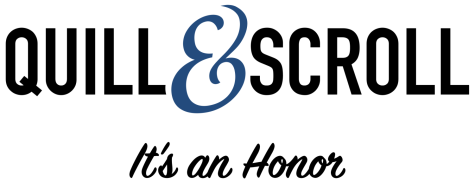Dec. 1, 2022
Our past three editions
Nov. 17, 2022 Midterms • Climate activism • Hearing loss
Nov. 10, 2022 Meta layoffs • Astro World Series
Nov. 3, 2022 Affirmative action • Tax returns and court literac
THE LEDE | by Alex Steil
Chinese citizens protest COVID-19 lockdowns
Protestors are using blank sheets of paper
“You can’t censor what is unsaid,” said a Chinese COVID-19 protestor. Even in a country where dissent is often stifled, citizens are protesting a wave of new and imposing COVID-19 health restrictions. The nation’s “zero-tolerance” policy has been some of the strictest in the world. Those speaking out have resorted to irony, such as math equations or blank sheets of paper, to mock the state’s inability to censor these materials. Protesters are calling for various policy results, from the end of the restrictive lockdowns to the end of President Xi Jinping’s reign as the state’s leader, they have been the biggest demonstrations in decades.
What you can do —
Although it is less reporting and more pedagogical, one way to approach this would be to talk about the global health of free speech. It has declined in recent years across the international community, but has not been thoroughly discussed. You could also examine free expression in your community.
For reporting ideas, the United States’ Chief Medical Adviser, Anthony Fauci, made an announcement before Thanksgiving to still be cautious and vigilant about COVID. This presents an interesting dilemma: Are we still in the pandemic? Students could evaluate the usual ends to pandemics in both a scientific and social lens. Do the vaccine/booster rates correlate with a requisite drop in case numbers? Are your students and schools acting like there is still a pandemic or have they moved on? What role does pandemic fatigue play in this?
Noteworthy
Thanksgiving and diet culture
Diet related ads increase on social media during the holidays
Nearly a month after diet-pill companies attempted to tie their products to Oprah’s “Favorite Things,” diet related ads on teens’ social media this holiday season. Amid intense criticism over the past few years about social media’s effects on teens’, especially young girls’, physical and mental health regarding their body image, some commentators are saying the ads promote diet culture.
What you can do —
Perhaps the most tangible story to come of these types is to gauge where your readers are. As an adviser, you may be groaning because you’ve done this before. However, there is ample evidence to suggest teens are more social media-literate than the graduating classes before them. The answers may change, especially with more teens adopting BeReal –– which advocates for a real, non-perfect version of life –– and TikTok –– which instead of promoting pompous and “perfect” photos of oneselves promotes accounts more equally and short, vlog-style videos. How are your students interpreting the ads? Post-pandemic, what is their perception of social media and their own self-image? Perhaps most importantly, do they have the tools to identify these ads from genuine medical advice?
A local nutritionist and/or eating disorder professional would be a great interview subject to discuss warning signs and social media’s impact on teen relationships with food.
World Cup shows tough competition
Teams are tying. A lot.
Cameroon and Serbia tied in the quadrennial year’s World Cup Group Stage 3-3. The United States and Wales tied 0-0. Mexico and Poland 0-0. You get the jist. This is the first World Cup since the pandemic, and international soccer fans are watching eagerly to put together a bracket of the 16 teams that will make it to the final bracket. But teams have been tying, often. There has been ample coverage by many national and international outlets on articles that analyze FIFA’s tie-breaking rules.
What you can do —
While the World Cup will have ended by your next brainstorming. But, there will always be time for ranking the best sports mishaps –– remember deflategate? For those on your staff who aren’t interested in the international politics of the World Cup, this is a good second choice for them to touch on: Where will this fall in soccer history? Do the predicted or the underdog teams win?
What’s viral: ‘She Said’ movie tells investigative journalism story
Actresses tell the story behind New York Times article
The New York Times article, the first crack in the dam, detailing Harvey Weinstein’s discloure of paying off multiple women he sexually assaulted is the focus of the new movie, “She Said.” The film seems to follow the same trajectory as Ronan Farrow’s book “Catch and Kill” and the 2015 movie, albeit of a different topic, “Spotlight.” The new movie details how the Times journalists Megan Twohey and Jodi Kantor told the first major story detailing Weistein’s payments to abuse victims. Ultimately, the article led to the #MeToo movement and Weinstein’s sentencing to 23 years in prison in 2020.
What you can do —
From a pedagogical lens, this would be a great foray into investigative journalism: examining texts like Farrow’s book, Bob Woodward and Carl Bernstein’s classic “All the President’s Men,” and a historical Upton Sinclair’s “The Jungle” can all help put the long history of investigative journalism into a clearer context for students by analyzing its development since its modern inception in the 1900s.
Or, teachers could play the film “All the President’s Men,” which is a great way to show how Woodward and Bernstein uncovered the story and leads to a great discussion of unnamed sources.
IT’S AN HONOR
Chapter activity or discussion point spark
Yes, this is a new Scroll feature — see the Just a Thought for more information
For those of you who are part of a class, now might be time to outline your recruitment timeline and action plan. Some of the best recruitment involves student voice and outreach.
A Chapter could take on some of these recruitment duties and plans.
A few basic questions to help your plan:
Why did you join?
Why did you stay?
How can we show this to students? (Promotional video, social media, English class presentations etc.)
Does your staff represent your school as a whole?
Some schools have special invitations to join or apply to staff.
What are some areas in which we need to make sure we recruit? (Both in staff composition and needs)
What is the timeline we need to adhere to?
What can we do within that timeframe?
Who is responsible for each component and its coordination?
What is the plan if someone isn’t able to fulfill what they signed up for?
Do we involve the rest of the staff?
Depending on the timeframe, advisers might need to meet with those who signed up for the action plan items in a few days for an update.
It’s always membership season
Don’t forget you can nominate members year round
You may be almost one half of the way through the school year. It’s a great time to submit members for Quill and Scroll! By submitting members now, you can also avoid the spring rush!
Scroll pause
We will take a little break during the weeks of Dec. 19, Dec. 26 and Jan. 2
We’re back, but only for the next few weeks. We will not publish during traditional school breaks. We will still be able to answer questions and process orders, so don’t hesitate to contact us with questions or even order memberships or other items.
We resume publishing regularly starting the week of Jan. 9.
Address change
Don’t forget our address changed in July
Just as a reminder, Quill and Scroll moved from Iowa to Minnesota last July. The University of Iowa is great about forwarding mail to us, but it can take a few extra weeks for checks and orders sent to Iowa to make it to Minnesota. (Remember, we do wait on either the check or purchase order to process your orders.) Please remind your business office of this change as well. Remember, we are now residing with the NSPA folks at:
2829 University Ave. SE, Suite 720
Minneapolis, Minnesota 55414
And don’t worry if the check is already in the mail. We will get it — eventually.
Just a thought
When I was advising our Quill and Scroll chapter met monthly. My contribution to our meetings usually involved sporadically supplying donuts and clementines (for a healthy option), and sometimes involved a discussion point for the chapter. For me, it was a casual conversation on what we needed to do as a group.
The students always lead the major chapter activities, but often, they relied on me for these discussion topics. I always asked if they had anything first. If they didn’t, I had something ready or easily Googleable. As an adviser, it sometimes felt like the discussion prompt work was just one more thing. That’s what I’m hoping to help you with.
Since you’re all very perceptive, you probably noticed a new feature in this week’s Scroll. While in St. Louis, several of you told me you would like to have ideas for chapter meetings. While I’m not set on the name yet (suggestions welcome), I thought getting this out sooner rather than later might help advisers and student leaders.
I want these to be casual discussion points you can use with your students. You won’t see a play-by-play lesson plan — although sometimes I may link to one. They might be questions to help start a brainstorming session on some topic (such as this week) or a starter question that involves law and ethics, team building or some other aspect of journalism.
Feel free to reach out with ideas on chapter talking points and feedback if you’ve used these. They are intended to just be a starting point that you use as you would like.
These will appear almost weekly — we will skip the week before a break as well as traditional school breaks. Please let me know if you use these and how I can improve them. They are not overly prescriptive on purpose. While some will have resources others will not.
I hope you find these tidbits useful. Let me know if you use these or have any ideas — or if you have a better name for this feature.
— Lori Keekley


